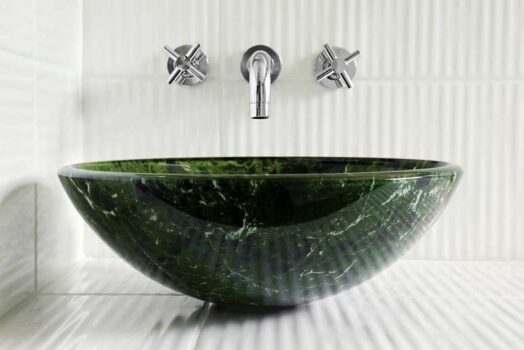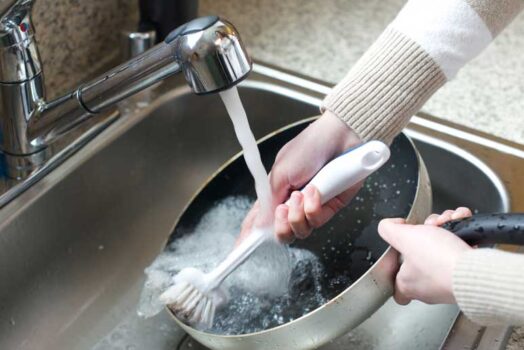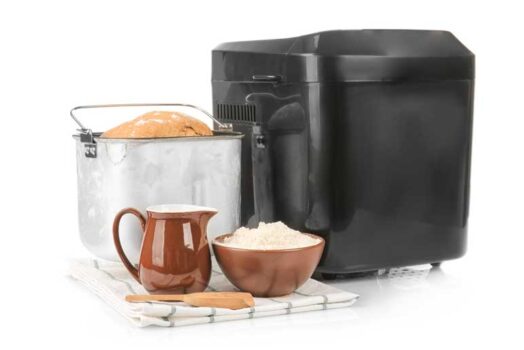You may want to remove your faucet’s flow restrictor because the water pressure is too low. You may simply want to remove it so you can clean it as these devices can easily get clogged. Whatever the case may be, you should know the proper way to remove the flow restrictor from your kitchen faucet.
Fortunately, this is not something that you absolutely have to call a plumber or handyman for. If you are really not comfortable working with your hands, then by all means, enlist the aid of a professional. However, if you don’t have any trouble with applying a little elbow grease and you have some simple tools lying around the house, you will find that the process is easy enough to carry out yourself.
In the following article we will be teaching you how to remove the flow restrictor from your kitchen sink but first, it will be helpful to know what the flow restrictor is, where it is in your faucet and what it’s function is.
What is A Flow Restrictor?
A flow restrictor is a small disc-shaped attachment that is typically located right above the aerator in your faucet head. The aerator itself infuses the water that flows out of the faucet with air to control the flow rate. The job of the flow restrictor is to further limit the flow rate by essentially blocking a certain percentage of water from exiting the faucet.
All modern faucets come with a flow restrictor built in. Depending on the brand and model of faucet, the flow restrictor allows different flow rates – some allow for higher flow rates and some keep it lower. The main purpose of a flow restrictor is to conserve water.
However, sedimentary particles in the water build up over time and your aerator and your flow restrictor may need to be cleaned. One tell-tale sign that your flow restrictor and/or aerator need to be cleaned is loss of water pressure from your faucet.
What you Will Need
In most cases you can remove a flow restrictor and aerator using your bare hands. For some faucets however, you may need the removal tool that came with your faucet when you bought it. If you don’t have this tool anymore, you can pick one up for cheap at any hardware store. The only other item you may need for the cleaning process is some distilled white vinegar but this is optional and is only needed if your aerator and your flow restrictor are especially dirty or clogged.
Removing the Flow Restrictor
Since the flow restrictor is housed with the aerator, you will need to remove the aerator. Before you begin though, it’s a good idea to cover the sink drain with a plug or anything that will completely cover it. Some smaller items in the aerator may come loose and fall so you don’t want to lose them down the drain.
Also, note that the aerator is the very tip of your faucet. To remove it, all you have to do is turn it clockwise with your hands. If you are having trouble establishing a firm grip on it, try very lightly moistening a rag with water, wrapping it around the aerator and using it to screw it off.
Once you have screwed the aerator off the faucet, remove the screen and the small disc and lay them on the counter.
Cleaning the Flow Restrictor and Aerator
If you want to remove the flow restrictor because of poor water pressure, you will need to clean it or replace it. To clean it, all you should need to do is run it under water and lightly rub it with your fingers. This is usually enough to remove and debris and sediment that may be stuck to the disc. You can do the same with the aerator screen. You may need to use a small brush to get rid of small sediment particles stuck in the screen.
In cases of stubborn sediment, you may need to soak the flow restrictor and the aerator in a small dish filled with distilled white vinegar for about 10-15 minutes. This will break up the minerals and essentially dissolve the sediment buildup. Rinse the flow restrictor and the aerator with water thoroughly and then replace.
Parting Advice
Of course, replacing your old flow restrictor with one that is rated to allow for a higher flow rate is always an option. In most cases though, cleaning your aerator and flow restrictor is enough to boost your current water pressure.




